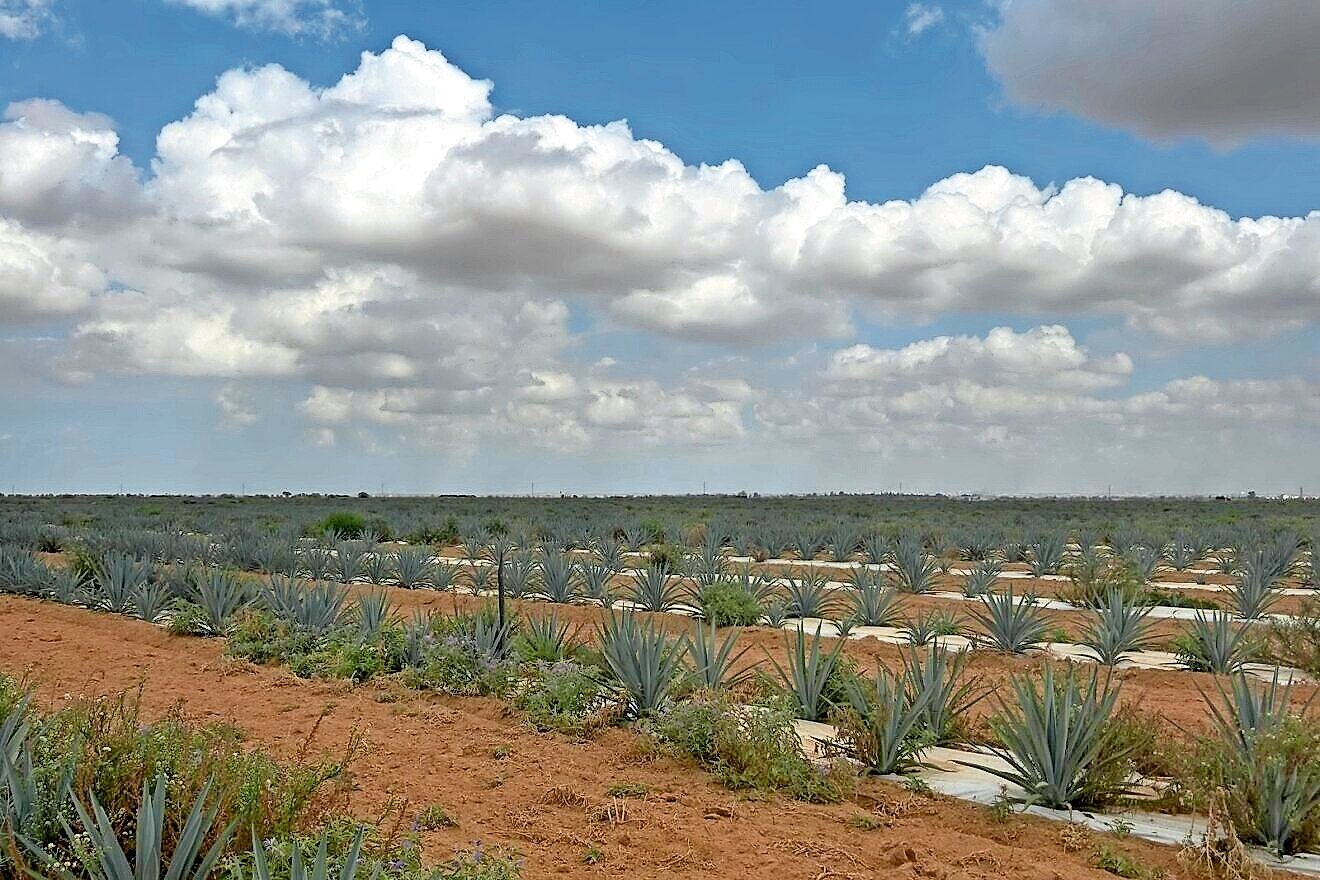Making the Negev desert bloom … with tequila
Avi Leitner and his partner Avi Rosenfeld went to Mexico years ago and discovered the secret behind producing high-end tequila — the blue agave plant.
They identified similarities in weather conditions in Mexico and in the Negev Desert.
“We are Zionists and pro-Israel. We want to turn the Negev green and this looked like a way to do so,” Leitner, president of the Blue Agave Israel Group, explained.
Six years ago, they decided to make their dream a reality.
“It was a risk,” Leitner said. “We were bringing these plants in and we did not know if there were insects, wild animals, or bacteria in Israel that the plants weren’t immune to,” he said.
“The Agriculture Ministry didn’t let us bring in actual plants,” he clarified. “We had to import cell tissue, grow it in a greenhouse for one year and then bring it to the Negev. Those plants are now entering their fourth year in the field,” he said.
The pair have planted 350 dunams (86.5 acres) with 400 plants per dunam. They are expected to reach maturity over the next two years.
Leitner and Rosenfeld have encountered a few bumps on the road to their first harvest.
“COVID was a big problem. We were trying to bring in Mexican experts to help us grow the plants but Israel wasn’t allowing anybody to come in from there. Mexico was one of the countries red-listed. In the end, we planted using Zoom,” said Leitner.
“Then there was the Oct. 7 Hamas attack on the Negev. We were horrified. A lot of the Thai workers that worked with us were killed, it’s been scary and tough,” he added.
Walking JNS through the fields near Kibbutz Alumim, Rosenfeld pointed in the direction of the border.
“This is pretty close to Gaza; you can see it from here. We didn’t consider moving the project because this is the only place where these plants can grow. We needed a certain temperature. If the temperature goes below zero, the agave goes bad,” Rosenfeld said.
Next year, the two will be building a distillery, and over the next year and a half look forward to having the first bottles on shelves. The distillery will also likely include a visitors’ center for enthusiasts, similarly to the way it’s done in Mexico.
On its visit to the Gaza border, JNS met professionals from the wine and food industry including Alexander Lachnish, a restaurant consultant. “It’s very moving to see something local grow from the ground up, literally,” Lachnish said.
“There is no Israeli tequila, so that would be a first. Any new initiative that has to do with the food industry and the cocktail industry I enjoy seeing,” he continued.
Eran Braverman, a Kibbutz Alumim farmer in charge of growing the blue agave, spent many Zoom calls with experts from Mexico to learn how to grow the plants.
Braverman said that in the aftermath of Hamas’ Oct. 7 attack, 120 Alumim families have returned, with only 15 still displaced.
“Everything works normally. There’s still a bit of noise from the war; We were most worried about the children but they adapted pretty fast,” he said.
“We lost 21 foreign workers, and soldiers as well. Members of the civilian defense squad were hurt but they all came back. We worked the entire time, we just didn’t work in areas close to the fence,” he said, adding that “once the military authorized us to do us, we worked there as well.”
The kibbutz has local workers “Bedouin from Arad and Thai workers who flew back to Thailand after Oct. 7 and have since come back,” Braverman added.
Domingo Garcia, an expert from Mexico who is part of the project, flew to Israel especially to inspect the plants.
“In Israel, we found the natural and climatic conditions not only to grow agave but to produce agave spirit. I might say that these conditions are close to the ideal,” he said. “We need a dry environment, some heat, a neutral pH soil and a good amount of clay,” he added.
“The people planting the agave plant, at the beginning, were not familiar with it. After what I saw, they are doing well. They are growing the plants fast and they are checking the sugar content. Hopefully, we will have fully mature plants in a couple of years,” he added.
According to Garcia, it is one thing is to grow agave, but another to produce the spirit.
“You have to transform sugars into alcohol, but agaves have a particular kind of sugar, called fructans. Raw fructans is not edible. We have to transform the fructans into fructose using heat. We do it by a process called hydrolysis,” Garcia explained.
To produce liquor out of blue agave, one must harvest the agave, cook it, crush the cooked agave, ferment it and distill the alcohol spirit. After a double distillation process, one gets the final product.
“From harvest to distillation, the process can last for nearly a month if we do it the ancient way,” he said. “The craft way takes about a week, and if we employ the highly industrialized method which is the dominant production model in the industry in Mexico, it takes two days,” he added.
“The highly industrialized way is controversial because it uses high-end machinery like diffusers and when we talk about diffusers, we’re talking about chemicals and sulfuric acids. We accelerate the process but you lose the soul of the tequila,” he continued.
Garcia will be involved in the process in Israel. First, the stakeholders will have to set up a distillery and choose the equipment, which will depend on the amount of agave and the volume of production, among other elements.
“All in all, we found all the conditions to produce high-end, sipping, nice agave spirit here,” he said.
In the coming year, another 100,000 blue agave are expected to be planted.






